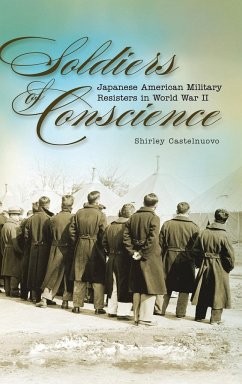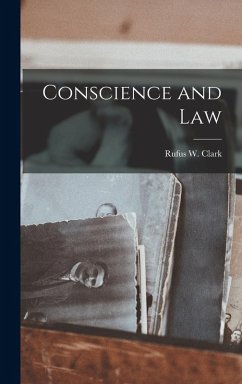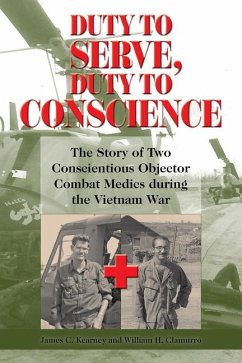
Fighting With a Conscience
Versandkostenfrei!
Versandfertig in über 4 Wochen
26,99 €
inkl. MwSt.
Weitere Ausgaben:

PAYBACK Punkte
13 °P sammeln!
In the 1930s air leaders and theorists at the Air Corps Tactical School developed a new concept for strategic bombing that sought victory through attacks on an enemy's war-making potential instead of its deployed forces. School officials believed such attacks directed against a country's economic "vital centers" or "industrial web" would destroy not only the ability to wage war but the will to fight as well. The concept also reflected a uniquely American sense of morality, as it included the notion that capability and will could be destroyed without directly attacking civilians. Those ideas co...
In the 1930s air leaders and theorists at the Air Corps Tactical School developed a new concept for strategic bombing that sought victory through attacks on an enemy's war-making potential instead of its deployed forces. School officials believed such attacks directed against a country's economic "vital centers" or "industrial web" would destroy not only the ability to wage war but the will to fight as well. The concept also reflected a uniquely American sense of morality, as it included the notion that capability and will could be destroyed without directly attacking civilians. Those ideas coalesced into the doctrine for the strategic bombing campaigns of World War II. That doctrine influenced both strategy and tactics and in the process made the American air effort predictable. The bombing campaigns against Germany and Japan were remarkably similar, although conducted in different areas of the world under unique circumstances. Air leaders in both theaters initially relied on high-altitude, daylight precision attacks directed at the enemy's industrial web. When faced with similar problems of poor weather, inaccurate bombing, deadly defenses, and surprisingly resilient enemies, they resorted to less precise bombing methods. Even then air commanders refused to abandon their humanitarian principles. The attacks continued against industrial web targets, but with more indiscriminate methods that were nonetheless motivated by the desire to shorten the war and save lives on both sides. The emphasis on morality remained part of America's strategic bombing doctrine after the war. Air leaders directing bombing campaigns against North Korea, North Vietnam, and Iraq faithfully ascribed to the industrial web theory, attacking similar tar-gets in each conflict in predictable fashion-with bombing methods designed to avoid civilian casualties. Each campaign appeared successful, employing increasingly accurate bombing methods that improved effectiveness while reducing civilian cas This work has been selected by scholars as being culturally important, and is part of the knowledge base of civilization as we know it. This work was reproduced from the original artifact, and remains as true to the original work as possible. Therefore, you will see the original copyright references, library stamps (as most of these works have been housed in our most important libraries around the world), and other notations in the work. This work is in the public domain in the United States of America, and possibly other nations. Within the United States, you may freely copy and distribute this work, as no entity (individual or corporate) has a copyright on the body of the work. As a reproduction of a historical artifact, this work may contain missing or blurred pages, poor pictures, errant marks, etc. Scholars believe, and we concur, that this work is important enough to be preserved, reproduced, and made generally available to the public. We appreciate your support of the preservation process, and thank you for being an important part of keeping this knowledge alive and relevant.












